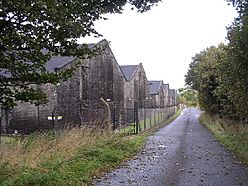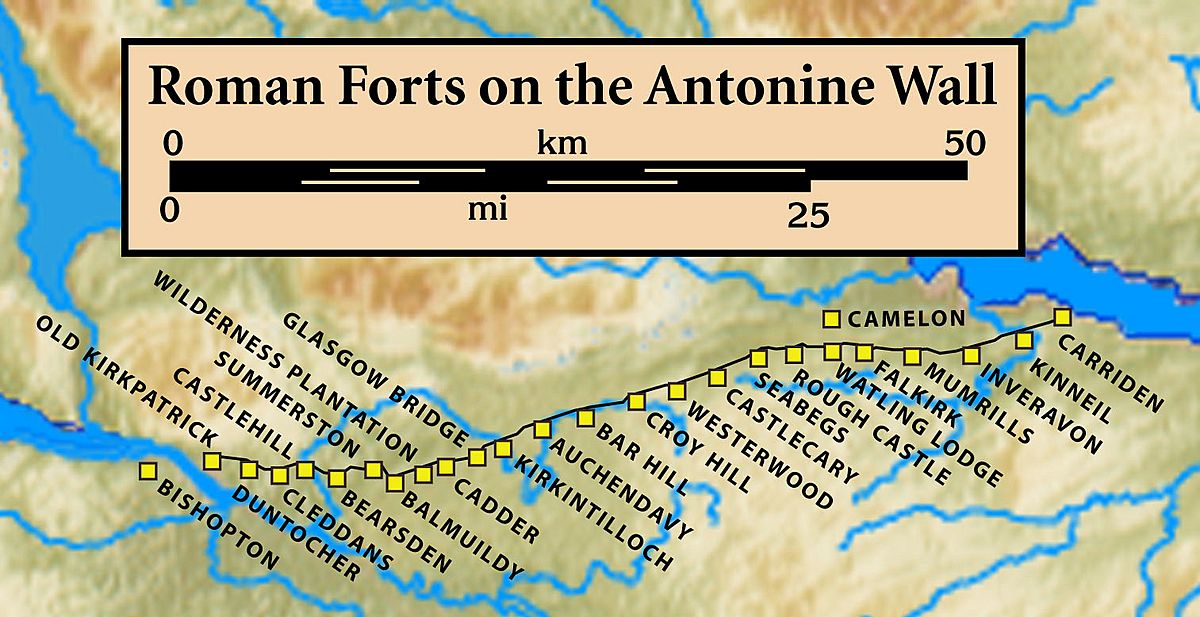Wilderness Plantation facts for kids
Quick facts for kids Wilderness Plantation |
|
|---|---|

Bonded warehouses near the site of the Roman Fortlet
|
|
| Founded during the reign of | Antoninus Pius |
| Place in the Roman world | |
| Province | Britannia |
| Location | |
| County | East Dunbartonshire |
| Country | |
| Site notes | |
| Discovery year | 1965 |
| Condition | under crops |
| Excavation dates | 1965, 1966 |
Wilderness Plantation was a small Roman fortlet in Scotland. It was part of the Antonine Wall, a large defensive barrier built by the Romans. This wall stretched across Scotland, from the River Forth to the River Clyde. The fortlet itself was located between the River Kelvin to the north and the Forth and Clyde Canal to the south.
Contents
Discovering Wilderness Plantation
The site of Wilderness Plantation was found in October 1965. It was discovered using special aerial photography. This method helps archaeologists see old structures hidden under the ground. After the discovery, a person named Wilkes led excavations in 1965 and 1966.
What is an Interval Fortlet?
Wilkes described Wilderness Plantation as an "interval fortlet." This means it was a small fort built between larger Roman forts. Other examples of these small forts include Duntocher and Glasgow Bridge. These fortlets helped to guard the Antonine Wall.
Nearby Roman Forts
Wilderness Plantation was not alone on the wall. It had larger Roman forts as neighbors. To its west was the fort of Balmuildy. To its east was the fort of Cadder. These forts worked together to protect the Roman frontier.
Life at the Fortlet
Archaeologists have not found any Roman coins or written messages directly at Wilderness Plantation. However, a single Roman coin was found nearby at a place called Wilderness West. This coin was a Hadrian dupondius.
Many Roman forts on the Antonine Wall housed groups of soldiers. These groups, called garrisons, often had about 500 men. Some larger forts, like Castlecary and Birrens, could hold around 1000 soldiers. It is thought that women and children also lived near these forts. Even though soldiers were not officially allowed to marry, families often lived close by. There were likely also many civilians living around the fortlet, providing goods and services.



